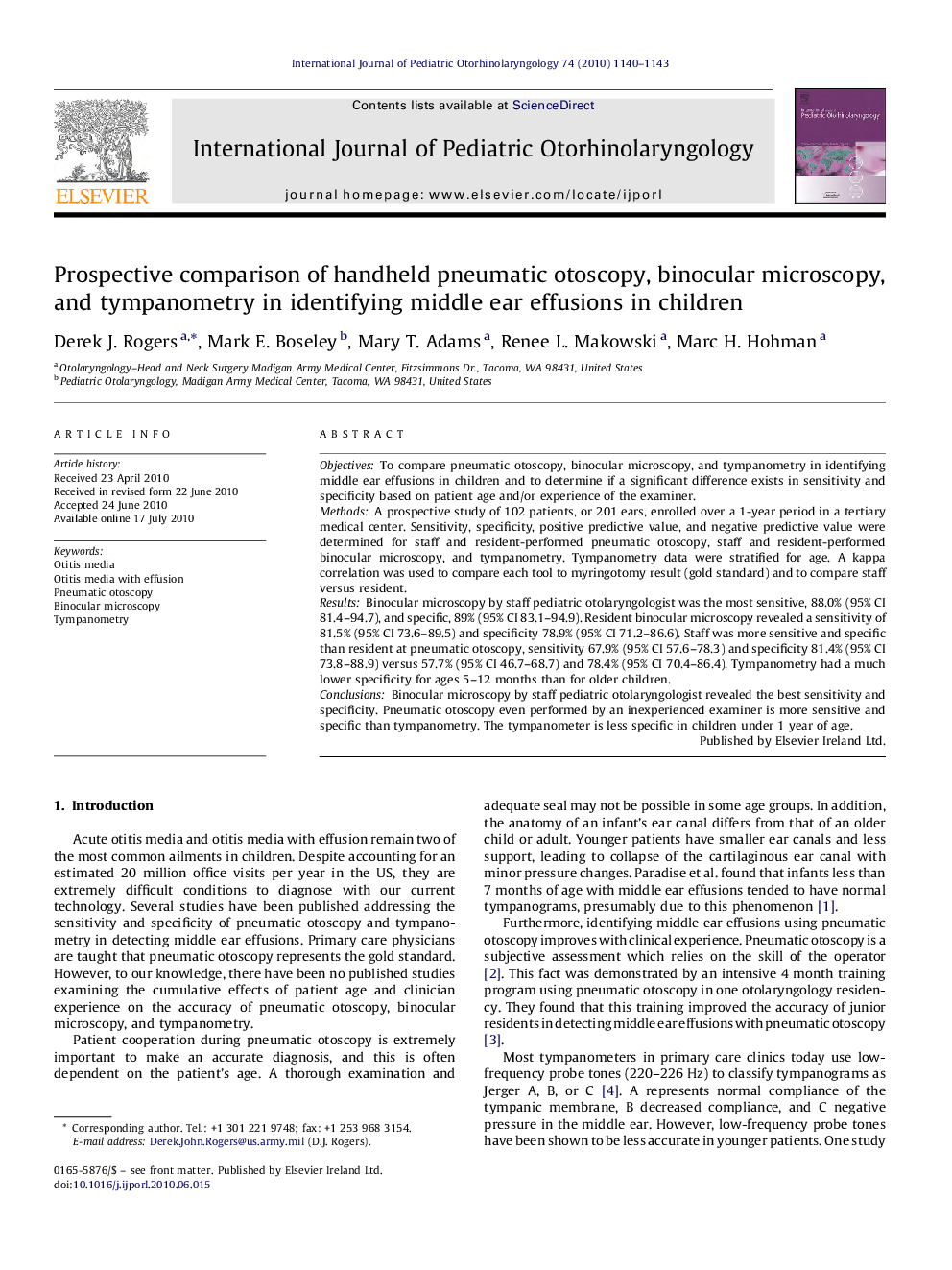| Article ID | Journal | Published Year | Pages | File Type |
|---|---|---|---|---|
| 4113767 | International Journal of Pediatric Otorhinolaryngology | 2010 | 4 Pages |
ObjectivesTo compare pneumatic otoscopy, binocular microscopy, and tympanometry in identifying middle ear effusions in children and to determine if a significant difference exists in sensitivity and specificity based on patient age and/or experience of the examiner.MethodsA prospective study of 102 patients, or 201 ears, enrolled over a 1-year period in a tertiary medical center. Sensitivity, specificity, positive predictive value, and negative predictive value were determined for staff and resident-performed pneumatic otoscopy, staff and resident-performed binocular microscopy, and tympanometry. Tympanometry data were stratified for age. A kappa correlation was used to compare each tool to myringotomy result (gold standard) and to compare staff versus resident.ResultsBinocular microscopy by staff pediatric otolaryngologist was the most sensitive, 88.0% (95% CI 81.4–94.7), and specific, 89% (95% CI 83.1–94.9). Resident binocular microscopy revealed a sensitivity of 81.5% (95% CI 73.6–89.5) and specificity 78.9% (95% CI 71.2–86.6). Staff was more sensitive and specific than resident at pneumatic otoscopy, sensitivity 67.9% (95% CI 57.6–78.3) and specificity 81.4% (95% CI 73.8–88.9) versus 57.7% (95% CI 46.7–68.7) and 78.4% (95% CI 70.4–86.4). Tympanometry had a much lower specificity for ages 5–12 months than for older children.ConclusionsBinocular microscopy by staff pediatric otolaryngologist revealed the best sensitivity and specificity. Pneumatic otoscopy even performed by an inexperienced examiner is more sensitive and specific than tympanometry. The tympanometer is less specific in children under 1 year of age.
